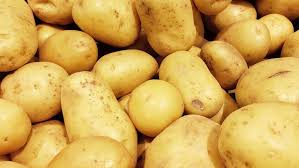Morocco is making a strong return in the global potato export market after several years of decline that pushed the country far down the list of leading exporters. Recent trade data shows that between July 2024 and May 2025, the North African country exported about 42,900 tonnes of consumer potatoes, valued at $14.9 million. This figure represents a massive 5.7 times increase compared to the previous season and is 1.5 times more than the export volume recorded during the 2022–2023 period.
The recovery, according to agricultural market sources such as EastFruit, is largely due to the reopening of trade with West African nations and consistent demand from Europe. This performance comes after the country’s potato exports reached a low point during the 2023–2024 season, when only 7,400 tonnes were shipped. That poor performance caused Morocco to tumble from the 28th to the 67th position among global potato exporters.
The export decline had actually started years earlier. Morocco’s peak performance came in the 2018–2019 season when it shipped nearly 100,000 tonnes of potatoes to various markets. However, each year after that saw smaller volumes as the country lost market share to other competitors in the region and beyond.
One major factor that shaped recent trends in Morocco’s potato trade was a government embargo. From February 2023 until July 2024, Moroccan authorities banned potato exports to West African countries. Officials explained that the move was aimed at protecting local consumers by stabilising prices and preventing shortages during periods of low harvest. The embargo meant exporters had to focus mainly on European markets during that period.
When the embargo ended, the Moroccan government replaced it with a quota system, which allowed trade with West Africa to resume but under controlled volumes. This policy shift has proven beneficial for trade recovery. Mauritania and Mali have quickly returned as Morocco’s leading potato buyers, taking almost half of the total export volume during the 2024–2025 season. These two countries prefer sourcing potatoes from closer regional suppliers instead of far-away markets, especially due to ongoing global supply chain uncertainties.
Apart from West Africa, Europe remains a solid market for Moroccan potatoes. Spain is the leading destination on the continent, with imports showing steady growth. Other key buyers include France, Portugal, Côte d’Ivoire, and Senegal. However, the recovery has not been evenly spread; countries such as the Netherlands, Burkina Faso, and Niger saw sharp drops in imports from Morocco over the past season.
Morocco’s potato exports also follow a well-known seasonal pattern. The bulk of shipments happen in two major windows — between July and September, and then again from February to April. This timetable matches the country’s harvest periods and coincides with peak international demand.
Despite the strong rebound, Morocco’s potato industry still faces several challenges that could slow down future growth. Weather conditions, including unpredictable rainfall, directly affect production levels. Water availability for irrigation is another big concern, especially as climate change makes farming more difficult. On the trade side, policies from importing countries can also influence how much Morocco can sell abroad. The 2023 embargo itself was a clear reminder that regulatory decisions — whether for local protection or market control — can have a serious impact on producers and exporters.
Agricultural analysts say that for Morocco to sustain and expand its potato export market share, the industry must focus on maintaining high quality standards and competitive pricing. Consistency is important both for African markets, where regional relationships matter, and for Europe, where buyers expect high standards and timely delivery. Logistics improvements, better storage facilities, and efficient transport networks will also help the sector avoid past setbacks.
The revival of West African trade partnerships is seen as a positive sign for the years ahead. However, experts believe that Morocco will need to address the structural problems in its farming and export systems to avoid another steep decline. With the right investment in irrigation, climate-resilient seeds, and market diversification, the country could once again return to its near 2018–2019 performance levels. For now, the 2024–2025 numbers show that the potato sector is still capable of competing on both African and European fronts — but keeping this momentum will require careful planning and consistent execution.
